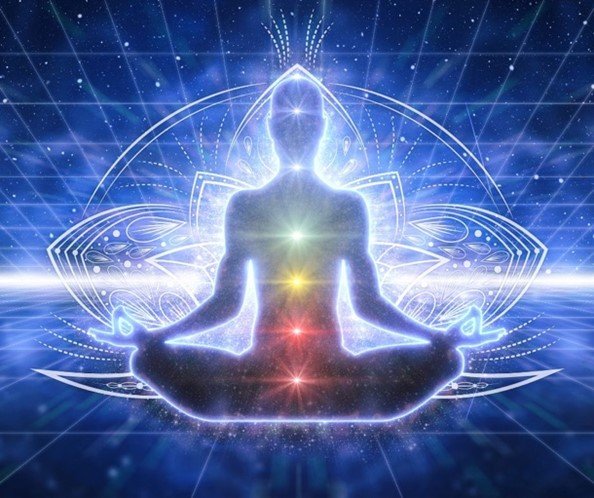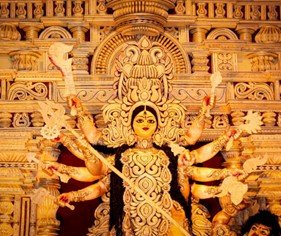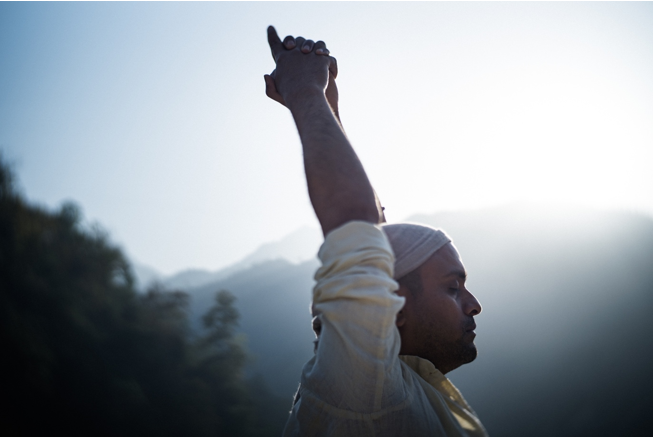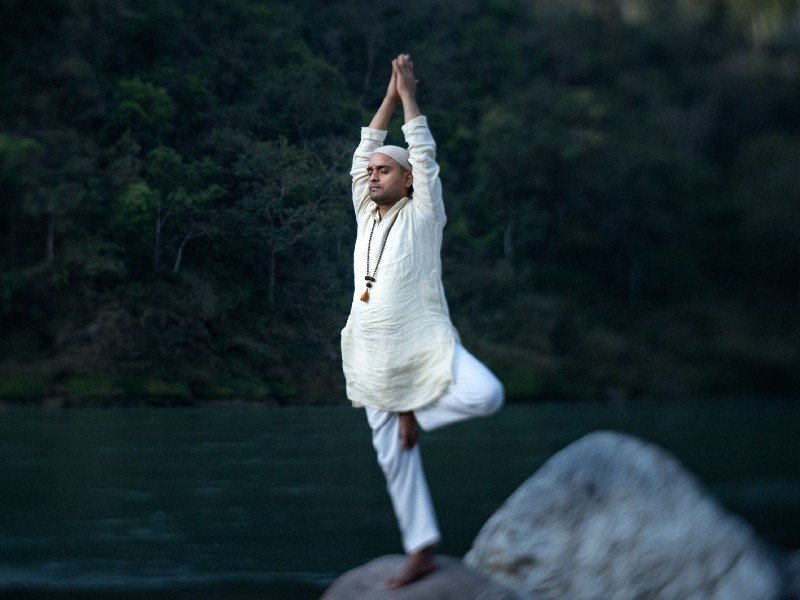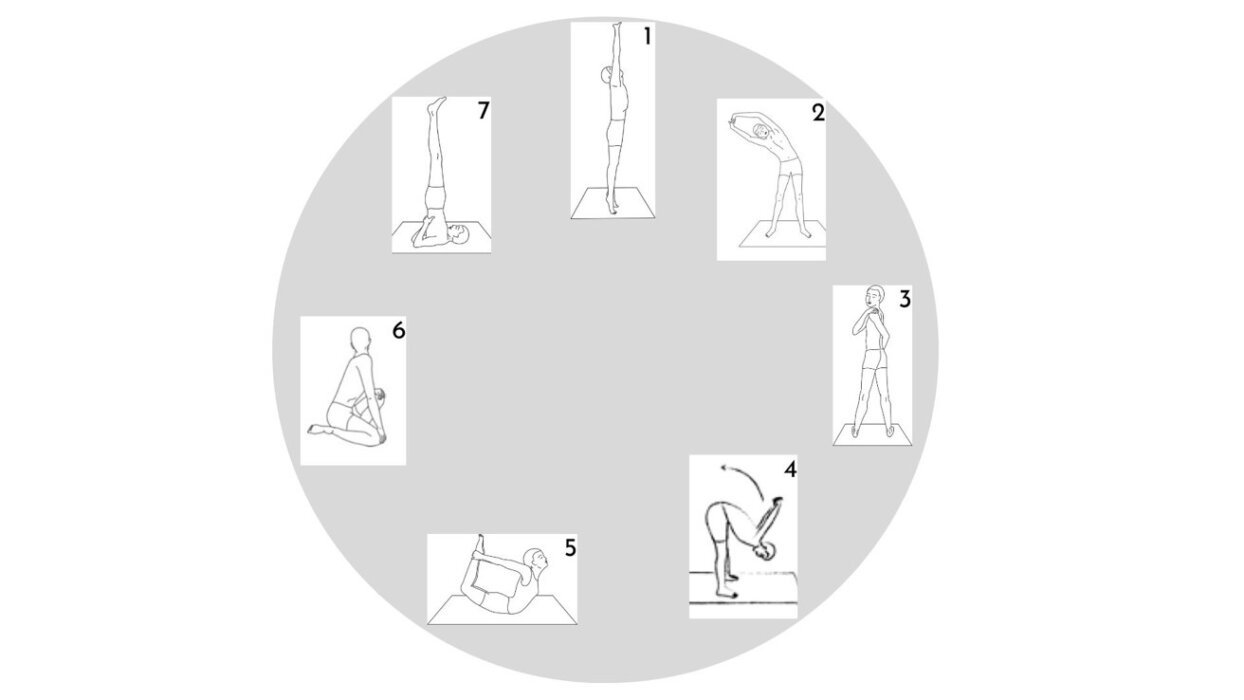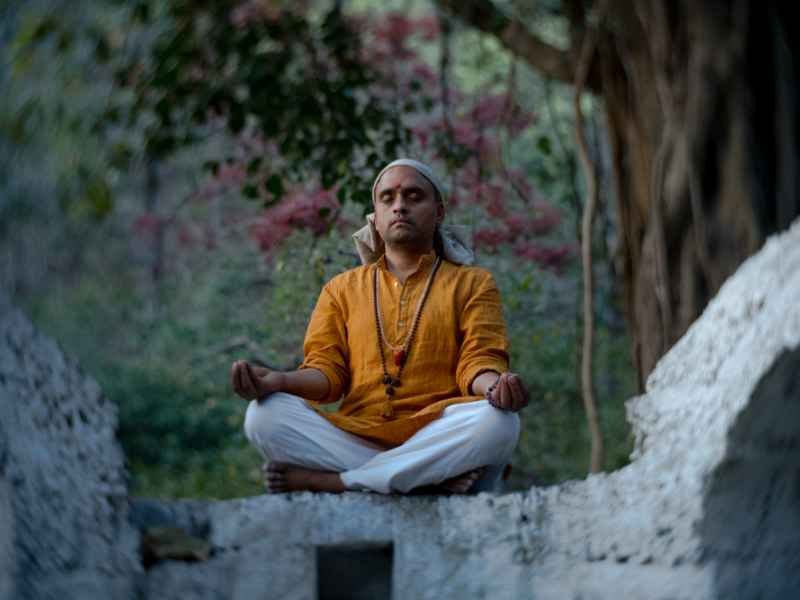The Vedic Yoga Centre is dedicated to bringing to students the ancient teachings of yoga in their purest form so that yoga can become a spontaneous part of their lives. “Rishikesh yoga” is the teachings of the sacred Himalayas, and in modern times all of those ancient teachings still live in the atmosphere in a non-verbal dimension.
The tradition of the Himalayas carries all different ancient teachings such as hatha yoga, kriya yoga, kundalini yoga, Swara yoga, nada yoga, ashtanga yoga, mantra yoga, tantra yoga, bhakti yoga, karma yoga, jnana yoga, raja yoga, and Vedantas and Upanishads.
All of these different paths are an integral part of the teachings at the Vedic Yoga Centre. These authentic yoga teachings from the sacred Himalayan tradition are included in all of our programs such as Himalayan Kundalini courses, beginner yoga and meditation course, and different levels of Yoga Teacher Training programs, both online and on-site in Rishikesh. Unfortunately, there are many people who are unable to participate in either of these options due to personal circumstances, so we try to present articles such as this Sequence of 7 Best Yoga Postures which can have a very powerful impact on a practitioner’s holistic health, even if they can’t connect with us directly.
Why is this Sequence a good combination for your regular practice?
This Sequence is a combination of all the different types of movements from hatha yoga – forward bending, back bending, side bending, twisting, inversions, and balancing poses which have a deep impact on all different organs, muscles and systems of the body.
There are many different sequences to practice, but we are trying to simplify it as much as possible because in day-to-day life those who are facing a lot of stress or depression and the muscles are very tense, so they think yoga is not for them because they are not able to practice due to physical limitations. Even in this Sequence it is important to just do what you can – however you can, and just be there, and breathe. Accept yourself where you are right now.
Background
In a previous blog we discussed a sequence of the 7 best yoga postures for a short daily complete yoga practice. Its benefits include:
1. A practice for keeping the spine healthy, as well as all joints and muscles of the body;
2. A practice for de-stressing;
3. A practice for reducing depression;
4. A practice for de-toxifying the body;
5. A practice for lowering insulin levels for diabetics;
6. A practice for boosting immunity; and
7. Overcoming many other common imbalances caused by modern living.
The seven asanas of this sequence in brief

After completing this sequence, it is important to sit in one’s chosen meditation posture and practice prana Dharana – a meditation on the prana. The journey through this Sequence is the preparation for your inner balance between the solar and lunar forces within the body, so that you can be spontaneous with the practice of meditation.
In this blog, we will discuss the effects of this sequence on the five different koshas of the body. Kosha means layer or sheath. According to yoga philosophy, a human being is capable of experiencing these five dimensions of existence. The external kosha is the physical dimension, while the others are progressively subtle. The SOUL is at the centre of the innermost sheath. The other four layers cover the soul, and all the sheathes are inter-related with each other. The five sheaths operate as a holistic system.
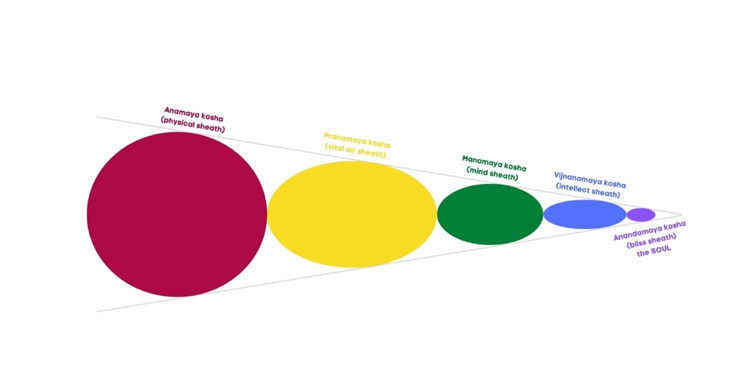
A brief description of the 5 koshas
1. Anamaya kosha (physical layer)
The outermost kosha is the food sheath – the physical body nourished by food. It includes the five organs of perception (sight, hearing, smell, taste and touch) and the five organs of action (arms, legs, mouth, reproductive organs and excretory organs). Any shortcomings or changes (both positive and negative) in the other four koshas manifest themselves in the anamaya kosha. So all disease, regardless of its origin, finally manifests in the body.
2. Pranamaya kosha (energy layer)
Pranamaya kosha regulates the prana – one’s life energy – with the help of the breath. The breath is the vehicle of prana which moves through the nadis (energy channels) throughout the astral body. The nadis are purified with the help of all different yogic practices. Purification of the nadis helps to expand the pranamaya kosha, which is just a bridge between your physical and mental layer.
Movement of prana – there are two powerful times when you can harmonise the pranic rhythms within the mind and body:
* In the morning between 3:30-7:30am, when the prana is rising upward (after 12:00pm it starts to move downwards); and
* In the evening time, when the sun in setting and the moon is rising.
A person’s pranamaya kosha can be experienced. When you get a feeling about a person you meet, even if you don’t know them, you can experience their pranamaya kosha. It is a physical expression of the person’s pranic rhythms.
3. Manomaya kosha (mental layer)
The manomaya kosha deals with the sensory mind. Its role is to think and feel. It is the layer that needs to be disciplined through our yogic practices.
When the first two layers (anamaya and pranamaya) are lacking harmony between them, the manomaya becomes distracted – that is what we call the “monkey mind”; but when there is alignment between the first two, then it helps the manomaya to be focused, which leads to the presence of the mind – a state of clarity. This is where the practitioner can build up determination and cultivate developing their will power.
Brain waves
The different states of a person’s mind create particular types of brain waves. Scientific research has shown that the state of your consciousness is responsible for the type of brain waves that operate in your mind. All of your brain waves are on a continuum. They are listed here on a scale from the most gross to the most subtle:
• Beta waves – on EEG these correspond to the normal waking consciousness.
• Gamma waves – are associated with higher brain functions like reasoning and memory. They can improve your working memory and problem-solving ability.
• Alpha waves – indicate a relaxed and tranquil state.
• Theta waves – are slower than alpha waves, and give a dream-like state, creating a world of imagination.
• Delta waves – appear in the deepest state of relaxation and in restorative healing sleep, and are most commonly seen in infants.
From these definitions you can see how these waves represent different states of awareness. All yogic practices are for helping the brain to tap into generating more alpha, theta, and delta waves, which helps efficient functioning in all aspects of one’s life.
4. Vijnanamaya kosha (intellect layer)
Vijnanamaya kosha is a state of inner clarity and intuitive intelligence. It begins to function when there is alignment between the first three layers, which is the experience of stillness. At this level of awareness, you are able to hear the knowledge from within you.
Gradually the expansion of vijnanamaya awareness leads you to the state of shunya – where you are completely neutral. It is expressed as the experience of peace, where there is no longer any difference between your friends and your enemies. The ability to cultivate that intense Dharana leads to deeper stages of experience.
5. Anandamaya kosha (blissful layer)
The anandamaya kosha is purely a state of experience – it is felt as a state of bliss, peace, and happiness – words are unable to describe this because it is not an intellectual concept. It is purely a state of experience. It cannot be grasped through the mind. It is the very nature of your roots – it is your soul.
At the level of the senses, it is experienced as a drop of this happiness – no matter what we are doing in our external life, we are constantly seeking this happiness, but we are unable to find our completeness there. As you begin to redirect your awareness within and start to experience your happiness and joy in life, and your fearlessness, you get an indication that you are on the path to your home.
The journey from gross to subtle in the Sequence of 7 Best Yoga Postures
The sequence of 7 Best Yoga Postures is based on the first three koshas: integration between the body, breath, energy, and mind. It is a journey from the gross to the more subtle:
1. In the beginning, you only have awareness of the body – you feel each movement so that it can be a conscious movement.
2. Then along with the movement, you add your awareness of the breath.
3. Then you become aware of the different parts of the body being affected in each posture.
4. Next, you try to remain longer in each posture, holding the breath either out or in, according to the movement, e.g. when you bend forward you will hold the breath out; when you bend backward, you hold the breath in, when you twist you will hold the breath out etc.
5. Finally, you are able to maintain the prana Dharana – the awareness on prana in your chosen meditative posture, or in Shavasana.
Effects of the Sequence on the koshas – the astral body
1. When you become aware of the movement and integrate this with awareness of the breath, it affects your anamaya kosha, the physical layer, and the pranamaya kosha (energy layer).
2. When the pranamaya kosha is affected in this way, it begins a detoxifying process – it purifies your energy channels (nadis) which allow the prana to flow in its rhythmic form – spontaneously. It will only flow spontaneously when you can integrate:
• the movement, with
• the breath, and with
• the experience of the different body parts being affected, AND
• the senses and mind.
This affects the manomaya kosha (the mental layer).
3. Points 1-2 show how the movement in the practice, with awareness of breath, body, mind, and senses, affects the physical layer, energy layer and mental layers of the body.
4. As these layers start to become aligned it brings you to a state of clarity which naturally brings you to function intuitively (this is the vijnanamaya kosha).
5. As you begin to function with clarity on a regular basis, it leads you to a state of inner joy and bliss through your stillness and the gradual expansion of your inner consciousness.
6. Conscious movement leads to stillness; stillness leads to clarity within, and inner clarity allows you to function at your full potential. This brings you to a state of inner joy and peace (anandamaya kosha).
These steps are a part of the ancient yogic methods of practice which help to bring both outer alignment and inner alignment to the practitioner. This alignment leads to the practitioner’s holistic health and well-being – both physical health and mental health.
Prana, nadis and chakras
Prana is the first unit of life within you, which functions with the help of the breath. The practices of posture and breathing (asana, pranayama, bandha, etc.) help to purify the energy pathway (the nadis). The basis of this purification is your conscious involvement with the practice because the movement of prana is based on the movement of your mind – your thoughts.
Wherever your mind is, that is where your energy is, e.g. if you are suddenly faced with a stressful situation, immediately your breathing patterns will change – your breath becomes very active or irregular; and because the breath is the vehicle of your prana, a stressful situation distracts the flow of your prana, which affects all different organs of the body and the mind.
This does not allow a state of balance to occur, and both your inner and outer consciousness become out of harmony. These two levels of consciousness are known as your chakras, and the process of bringing harmony between them through yoga practices is called chakra balancing.
The first 3 chakras (muladhara, swadisthana and manipura chakras) are the outer dimension of consciousness, and the next 3 (anahata, vishuddhi, and ajna chakras) are the inner dimension of consciousness.
It is only your consistent, mindful practice, carried out with patience, that will lead you to the state of integrating the physical and astral bodies, which then brings harmony between all the layers of your body and the different levels of your life.
Keep practicing the Sequence – it will help to move you along this path towards outer and inner alignment. In our next blog, we will share practices for continuing your physical, mental and spiritual health and well-being through this Sequence.





